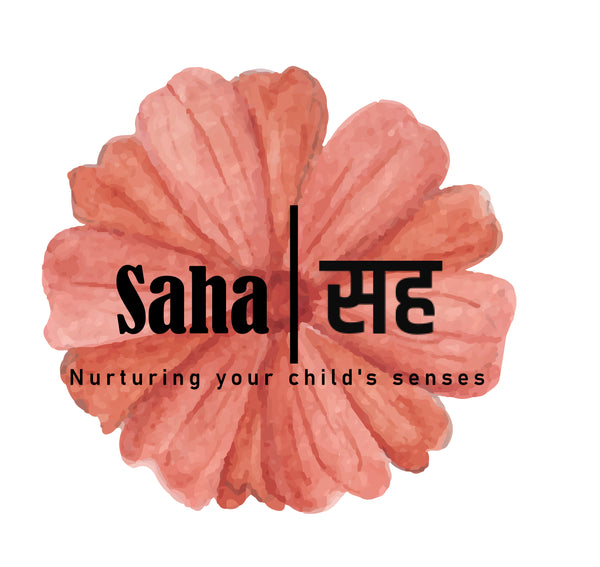
Rethinking Early Childhood Education with Unconventional Learning Approaches
Share
"Education should enable a person to discard false values, find true ones, and nurture them." - Rabindranath Tagore
Pause for a moment and consider whether modern education systems across the world, with few exceptions, truly address the development of the right values. Children are naturally inclined to learn because it is essential for their survival; they need to learn to become effective members of society. Unfortunately, the current education system often transforms this natural inclination into a burden. To create a world where education is not an industrialized system that stifles children's uniqueness, nor equates to material acquisition and consumption, we need to revisit the fundamentals and explore more authentic and purposeful ways of educating children.
Montessori Method
Developed by Maria Montessori in the early 20th century, this method emphasizes hands-on learning and the development of real-world skills. Instead of traditional instruction, children have the freedom to choose their activities from a variety of options, working uninterrupted to learn concepts through interaction with materials rather than direct instruction. The environment is designed to support each child's psychological development, and mixed-age group classes are a key feature.
Maria Montessori believed that education is instrumental in achieving world peace. Today, recognizing the power of education is crucial, especially in a VUCA (volatile, uncertain, complex, and ambiguous) world increasingly dependent on technology and distanced from the humanity within us.
Reggio Emilia Approach
Developed by pedagogist Loris Malaguzzi and parents in the villages around Reggio Emilia, Italy, after World War II, this approach is based on the principles of respect, responsibility, and community through exploration, discovery, and play. Like the Montessori Method, it is child-centered, encouraging children to follow their inner directions through sensory experiences and various forms of expression.
The Reggio Emilia Approach holds that the early years are the best period for children to understand themselves. Children express themselves through natural languages like painting, sculpting, singing, and dancing, and should be encouraged to interact with natural materials to express themselves fully.
Waldorf Education
Founded by Rudolf Steiner, Waldorf Education aims to develop students' intellectual, artistic, and practical skills through a holistic approach. It emphasizes arts, crafts, music, and movement, focusing more on experiences than on acquiring knowledge. The goal is to balance cognitive and emotional intelligence with physical activity, integrating fine and practical arts into assignments for older students.
Rooted in the concept of spiritual science, Waldorf education incorporates ideas like anthroposophy and eurythmy. The primary objective, however, is experiential learning through age-appropriate activities for the healthy development of children's hands, hearts, and heads.
Play-Based Education
Many preschools today offer play-based programs instead of traditional academic-based programs for children preparing for kindergarten. The core of this approach is open-ended, child-led activities that help children understand the world through play, which arises from their natural desire to learn. The five elements of play-based learning are that it should be self-chosen, enjoyable, unstructured, process-oriented, and imaginative.
In this approach, teachers act as facilitators rather than instructors. Despite the ambiguous definition of play, the ultimate goal is to help children learn through their experiences.
High/Scope Approach
Developed in the 1960s by the Perry Preschool Project in Ypsilanti, MI, this approach emphasizes active learning through hands-on experiences. Based on Constructivism, associated with Lev Vygotsky and Jean Piaget, it posits that reality is shaped by experiences and new knowledge is built on prior learning.
In the High/Scope Approach, children play an active role in selecting materials and activities, supported by teachers in a mix of teacher-directed and child-directed activities based on shared control. The curriculum framework aims at the all-around development of children.
International Baccalaureate (IB) Primary Years Programme (PYP)
The IB Primary Years Programme focuses on a transdisciplinary curriculum based on six themes: who we are, where we are in place and time, how we express ourselves, how the world works, how we organize ourselves, and how we share the planet. Subjects are important, but learning is not confined to their boundaries. Children engage in real-life problem-solving, enriching their learning experiences and encouraging meaningful action in their communities and the wider world.
Final Words
All these early education approaches share two common elements:
1.They prioritize children's experiences over mere knowledge acquisition and place children at the center of the learning process, not the teachers.
2.They are founded on the belief that early years are crucial for a better future for both children and society.
One crucial question remains: Does education start at school? The answer is no.
Education starts at home, where we always teach our children, even unintentionally.
As caregivers, it's essential to combine these approaches to create a home environment that nurtures a child's natural desire to learn. For example:
- Use toys made of natural materials like wood, cotton, and natural clay, as suggested by the Reggio Emilia Approach and Waldorf Education System
- Encourage artistic expression, a key aspect of both Waldorf and Reggio Emilia Approaches.
- Allow children to pursue their interests, even if they seem pointless to adults. The Montessori Approach advocates for letting children work uninterrupted, such as letting a child wash utensils repeatedly if they enjoy it.
In summary, as parents and caregivers, our role is to foster children's passion for learning and guide them according to their strengths and inclinations, not to extinguish their enthusiasm.
